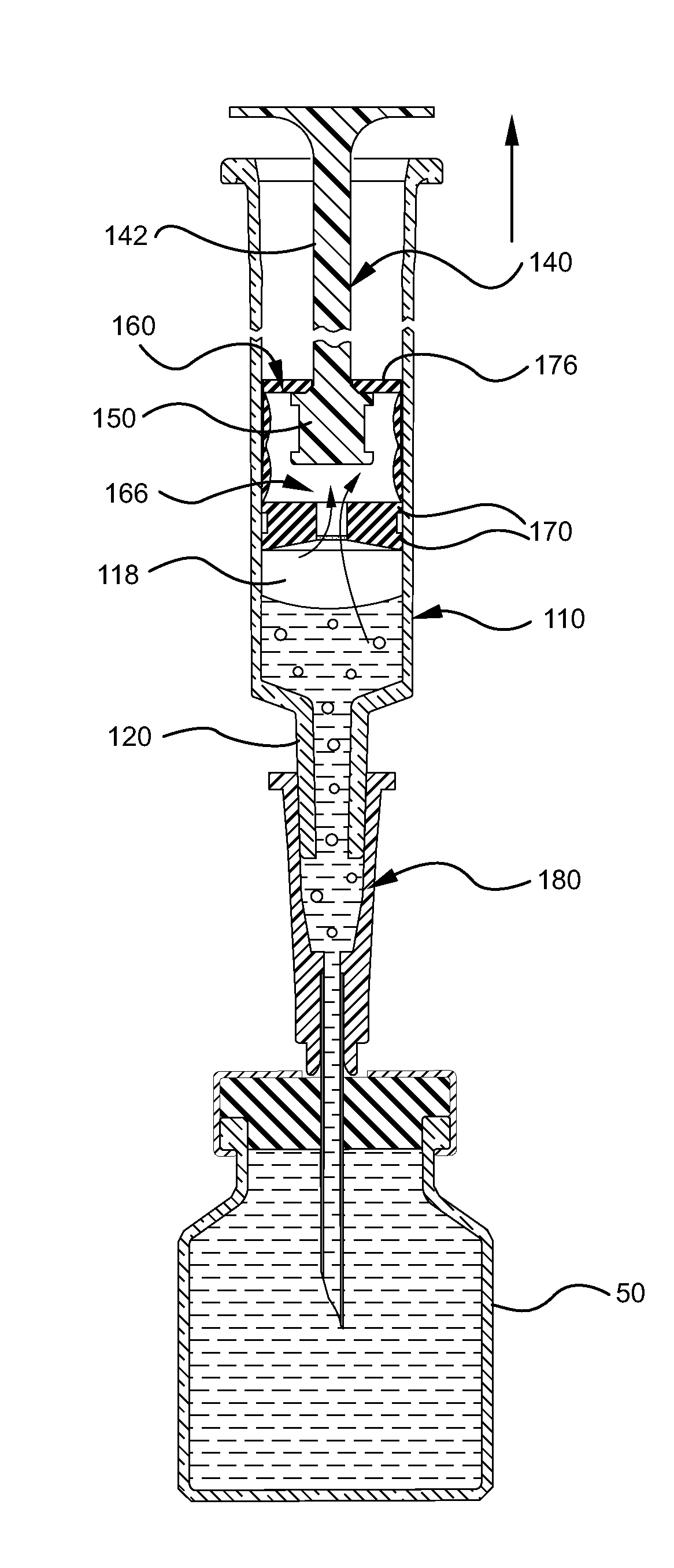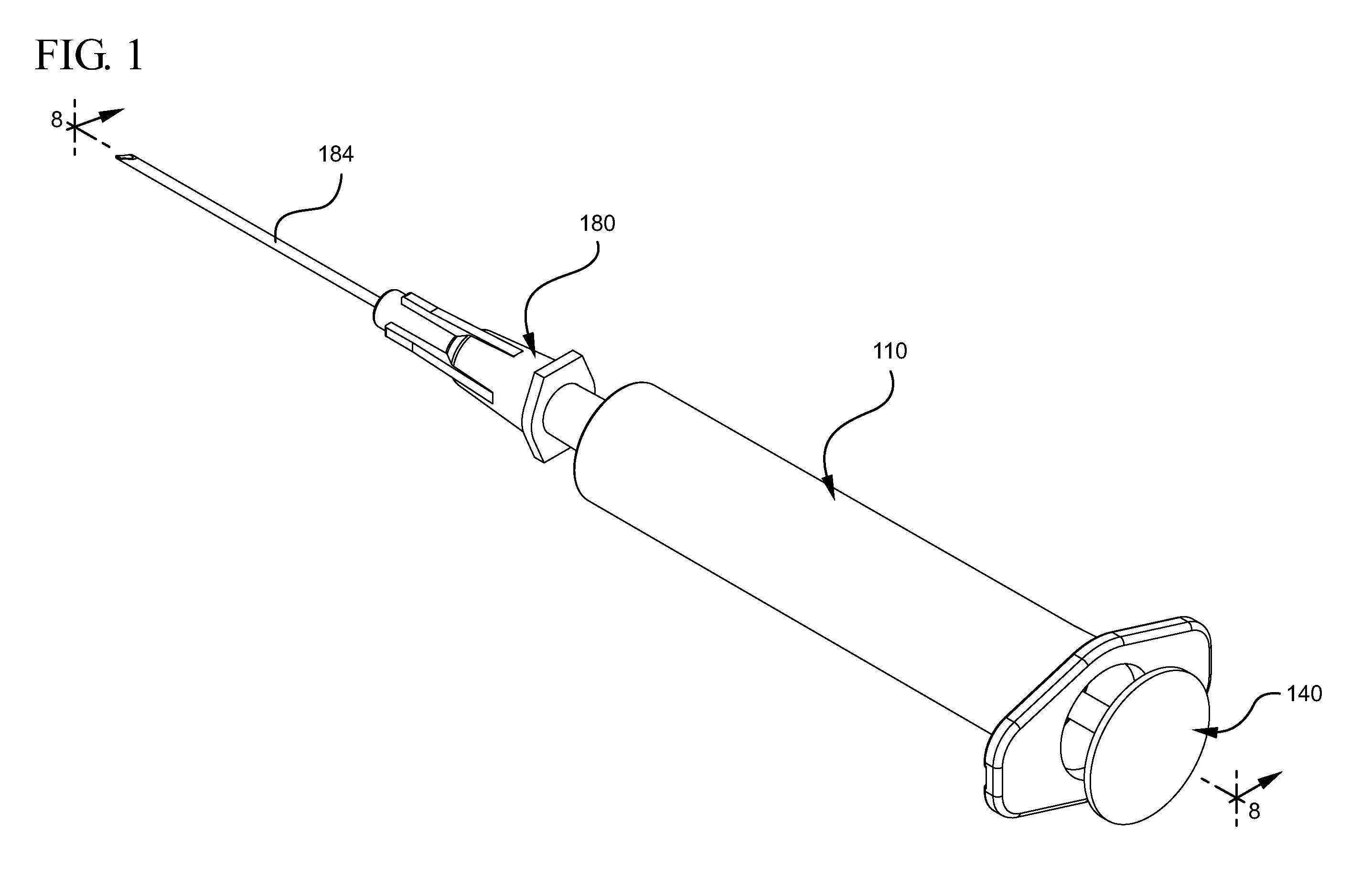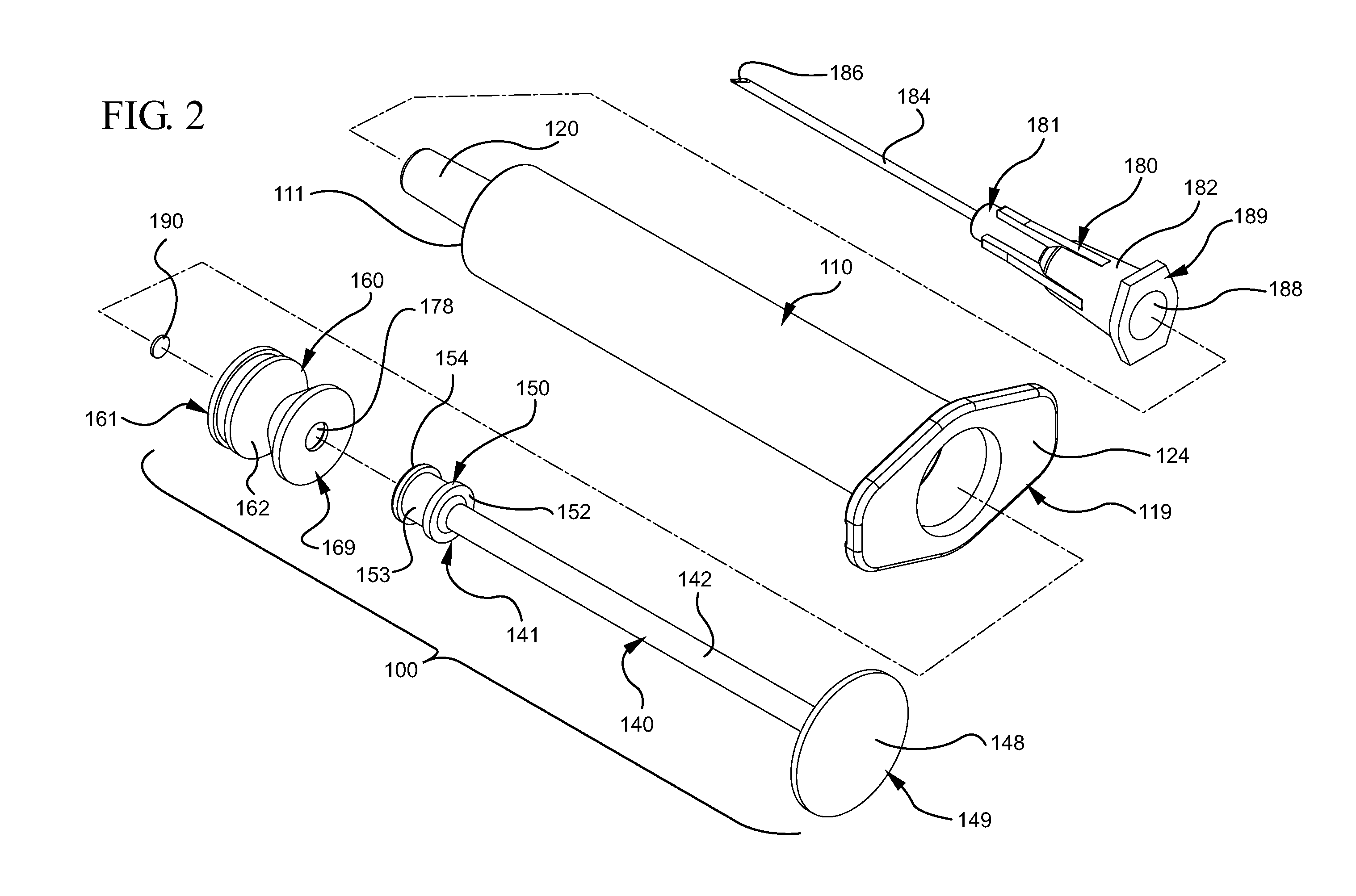Medical device including an air evacuation system
a medical device and air evacuation technology, applied in the field of medical devices, can solve the problems of inaccuracy of dosage measurements and other issues, expulsion of a portion of liquid aspirated into the syringe barrel, etc., and achieve the effect of preventing fluid communication
- Summary
- Abstract
- Description
- Claims
- Application Information
AI Technical Summary
Benefits of technology
Problems solved by technology
Method used
Image
Examples
Embodiment Construction
Before describing several exemplary embodiments of the invention, it is to be understood that the invention is not limited to the details of construction or process steps set forth in the following description. The invention is capable of other embodiments and of being practiced or being carried out in various ways. It is to be understood that the configurations shown in FIGS. 1-84 are merely exemplary, and the components can be different in shape and size than shown.
The embodiments of the present invention described herein, with specific reference to various aspects, provides for a medical device including syringe barrel or other containers to draw liquid from a source into the syringe barrel. The medical devices described herein generally include a plunger rod and stopper assembly and means to actively remove or evacuate air from the liquid drawn into the syringe barrel or other container. The embodiments of the medical device may be used with other types of containers, in additio...
PUM
| Property | Measurement | Unit |
|---|---|---|
| Force | aaaaa | aaaaa |
| Pressure | aaaaa | aaaaa |
| Distance | aaaaa | aaaaa |
Abstract
Description
Claims
Application Information
 Login to View More
Login to View More - R&D
- Intellectual Property
- Life Sciences
- Materials
- Tech Scout
- Unparalleled Data Quality
- Higher Quality Content
- 60% Fewer Hallucinations
Browse by: Latest US Patents, China's latest patents, Technical Efficacy Thesaurus, Application Domain, Technology Topic, Popular Technical Reports.
© 2025 PatSnap. All rights reserved.Legal|Privacy policy|Modern Slavery Act Transparency Statement|Sitemap|About US| Contact US: help@patsnap.com



